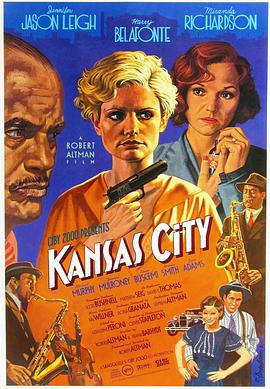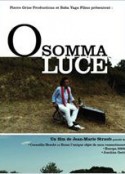
故事出现,产生,形成,酿成在1930年代,当时美国正值经济大萧条,人民精神萎靡不振,堪萨斯市里充满了赌博、卖淫等犯罪活动。欧哈拉的丈夫约翰尼是一个小混混,因为犯了事被当地老大西恩拘禁起来。欧哈拉为明白,明了,知晓,理解救丈夫,冒险绑架了当地一位政客的妻子卡洛琳,渴望,期望,盼望,企望能借此逼迫其政客丈夫利用关系网,促使西恩释放约翰尼。结果在相待,交往,来往,共处过程中,绑架者欧哈拉和被绑架者卡洛琳之间,反倒产生了一些微妙的感情变化。@www.qimiyingshi.net

转自:http://www.filmlinc.com/nyff/2010/views-from-the-avant-garde-friday-october-1/views-from-the-avant-garde-jean-marie-straub
“The end of paradise on earth.”—Jean-Marie Straub
The 33rd verse and last chant of “paradise” in Dante’s Divine Comedy. The film starts with verse 67, “O somma luce…” and continues to the end. “O Somma luce” recalls the first words uttered by Empedocles in Danièle Huillet and Jean-Marie Straub’s 1987 The Death of Empedocles—“O himmlisch Licht!…” (O heavenly light!). This extract from Hölderlin’s text is also inserted into their 1989 film Cézanne.
“O somma luce” invokes utopia, or better still “u-topos,” Dante, Holderlin, Cézanne… the camera movement, recalling Sisyphus, in the film’s long shots, suggests its difficulty.
In O somma luce, with Giorgio Passerone’s Dante and the verse that concluded the Divine Comedy, we find at the extremity of its possibilities, the almost happy speech of a man who has just left earthly paradise, who tries to fully realize the potential of his nature. Between the two we find the story of the world. The first Jean-Marie Straub film shot in HD.
So singular are the textual working methods of Straub-Huillet, and now Straub on his own, that it is hard to grasp how far reaching they are. Direction is a matter of words and speech, not emotions and action. Nothing happens at the edges, everything is at the core and shines from there alone.
During the rehearsals we sense a slow process by which ingredients (a text, actors, an intuition) progress towards cohesiveness. It is, forgive the comparison, like the kneading of dough. It is the assembling and working of something until it becomes something else… and, in this case, starts to shine. Actually it’s very simple, it’s just a question of opening up to the light material that has been sealed up. Here, the process of kneading is to bring to life and then reveal. The material that is worked on is speech. So it is speech that becomes visible—nothing else. “Logos” comes to the cinema.
The mise en scène of what words exactly?
The process of revealing, “phainestai”; “phainomenon,” the phenomenon, is what take splace, what becomes visible to the eye.
Is “Straubie” Greece?
This mise en scène of speech, which goes beyond a close reading of the chosen text, is truly comes from a distant source.—Barbara Ulrich

Eric (Corin Redgrave) is a novelist whose imagination is unusually powerful. While exploring a run-down mansion in the French countryside, looking for sites for his stories, he meets a girl dressed in clothes from another time. Returning to the site, he encounters a modern woman who says he probably met a ghost. He is fascinated by the situation which cannot be what it seems.
http://www.dvdparadoxe.com/serail.html

Divided into three "kingdoms" -- Enfer (Hell), Purgatoire (Purgatory) and Paradis (Paradise) -- Notre Musique is an indictment of modern times.
頑皮老頭高達在新作挑釁如常,堅持如舊,對電影愛情如一,但從形式到內容,卻續有新境。比前作《愛之頌》更練達更擊中要害,是他近年最激的反思作品。三段結構的開篇〈地獄〉,戰地實錄與荷里活戰爭片交替,寓意彰甚:人類真會嗜戰。〈煉獄〉借薩拉熱窩做說書人,真實與虛構人物(包括高達自己)到此舉行文化圓桌會議,大家在寬恕迷宮中兜轉,唯有佇立已修復的莫斯塔古橋,才感一絲渴望,期望,盼望,企望。高達最後領我們到〈天堂〉,人間竟有春色如許?但-有美軍駐守!全片最動人一幕:學生問 DV 可否打救電影?高達哀哀面向鏡頭,良久不語......
(http://www.hkiff.org.hk/hkiff29/chi/prog/show_detail.php?fi_code=053)